|
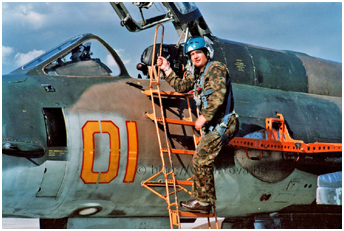
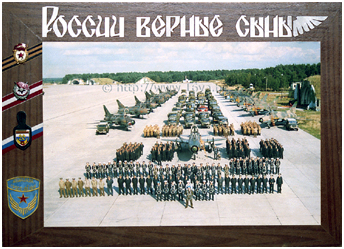 Of all the 16.VA regiments, the 20.GvAPIB based at Gross Dölln, not far from Templin, is the one that impressed me the most. The first meeting with this regiment and the garrison took place in the fall of 1989, when the 487 ovp B i U (2) moved from Prenzlau Airfield to Gross Dölln. Initially, even before the change, I, as a member of the aviation operational control groups of the 20th Guards Combined Arms Army (20.GvOA), was tasked to inspect the parking areas of the regiment's helicopters and a certain number of issues related to activities at the new airfield (helicopter safety, logistics, flight periods, etc.). Then I met for the first time with the commander of the Guards, Colonel Tamarovski V. V. and his Deputy for Aviation Technical Services (IAS), Lieutenant Colonel Gladychev V. Ya. From that day until mid-1993, I often had to visit this airfield, first as deputy chief IAS of the 20.GvOA, then as chief engineer of the 16.VA, aircraft and engines specialist (SD) (3). But I especially admired the commander of the Guards!
Of all the 16.VA regiments, the 20.GvAPIB based at Gross Dölln, not far from Templin, is the one that impressed me the most. The first meeting with this regiment and the garrison took place in the fall of 1989, when the 487 ovp B i U (2) moved from Prenzlau Airfield to Gross Dölln. Initially, even before the change, I, as a member of the aviation operational control groups of the 20th Guards Combined Arms Army (20.GvOA), was tasked to inspect the parking areas of the regiment's helicopters and a certain number of issues related to activities at the new airfield (helicopter safety, logistics, flight periods, etc.). Then I met for the first time with the commander of the Guards, Colonel Tamarovski V. V. and his Deputy for Aviation Technical Services (IAS), Lieutenant Colonel Gladychev V. Ya. From that day until mid-1993, I often had to visit this airfield, first as deputy chief IAS of the 20.GvOA, then as chief engineer of the 16.VA, aircraft and engines specialist (SD) (3). But I especially admired the commander of the Guards!
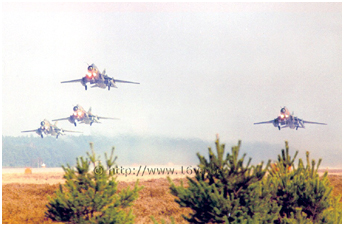
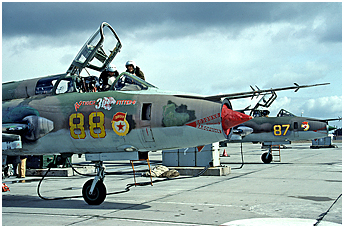 A wonderful pilot, a God as they say in aviation! An excellent organizer, he managed to captivate his deputies, squadron,and flight commanders, and then a significant part (if not all) of the regiment with his projects and creative thoughts. The garrison and airfield were located in a vast forested area, where the nearest German town was at least 20 kilometers away. But the soldiers and their families did not suffer because they always had activities. The wives prepared local amateur shows. Sports were held in high esteem in the garrison: championships, sports, and athletics games were regularly organized. I had never seen such a saturation of sporting events in a military camp before, neither during my service in the GSFG in 1969-74, nor in the garrisons of the Far East.
As in any air unit, flying came first. However, with Tamarovski, this were always carried out in a tactical context seeking to improve the skills of pilots, engineers, technicians, officers, personnel, and support unit specialists. And everything took place with visible pleasure and total dedication!
A wonderful pilot, a God as they say in aviation! An excellent organizer, he managed to captivate his deputies, squadron,and flight commanders, and then a significant part (if not all) of the regiment with his projects and creative thoughts. The garrison and airfield were located in a vast forested area, where the nearest German town was at least 20 kilometers away. But the soldiers and their families did not suffer because they always had activities. The wives prepared local amateur shows. Sports were held in high esteem in the garrison: championships, sports, and athletics games were regularly organized. I had never seen such a saturation of sporting events in a military camp before, neither during my service in the GSFG in 1969-74, nor in the garrisons of the Far East.
As in any air unit, flying came first. However, with Tamarovski, this were always carried out in a tactical context seeking to improve the skills of pilots, engineers, technicians, officers, personnel, and support unit specialists. And everything took place with visible pleasure and total dedication!
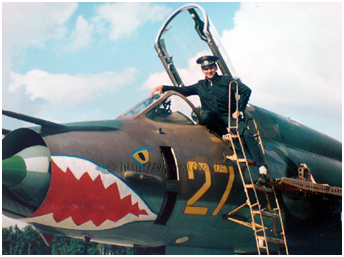
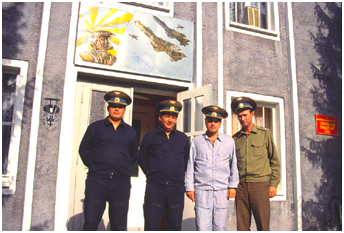 The infrastructure of the airfield with its two runways was ideal for emergency evacuation procedures. In the event of an attack, the airfields would indeed have been among the first targets. Valeri Vladimirovich was able to shorten the time necessary for the takeoff of the unit's three squadrons to half an hour from the moment the alarm was sounded, while the norm was an hour and a half! (4) The simultaneous takeoff in sections of an aviation squadron from the main 3500x80 meter runway is a truly mesmerizing spectacle! But only the Guards commander knew what obstacles he had to overcome to conduct the combat training of the regiment as he saw fit! The Guards personnel were working on improving their military skills on the firing ranges by strafing, bombing, and launching missiles - the slogan "Every bomb and every projectile - on target!" was current. When it arrived, the regiment was invariably the best of the 16.VA and not only that. Here is the statement of one of the participants of the Forumavia site under the nickname AFL: "The 20 apib was noted for having the highest training efficiency in USSR Air Forces Front Aviation. Too bad it was disbanded."
But his desire for excellence in everything demanded the same from all personnel, pilots and technicians. And they responded. I saw this clearly when observing the work of the technical staff of the regiment led by
Lieutenant Colonel Vladimir Yakovlevich Gladychev. The head of the IAS, in no hurry, who even sometimes seemed to me to be slow, enjoyed undisputed authority and respect from the entire regiment. His balanced decisions were understandable to all and executed without delay.
The infrastructure of the airfield with its two runways was ideal for emergency evacuation procedures. In the event of an attack, the airfields would indeed have been among the first targets. Valeri Vladimirovich was able to shorten the time necessary for the takeoff of the unit's three squadrons to half an hour from the moment the alarm was sounded, while the norm was an hour and a half! (4) The simultaneous takeoff in sections of an aviation squadron from the main 3500x80 meter runway is a truly mesmerizing spectacle! But only the Guards commander knew what obstacles he had to overcome to conduct the combat training of the regiment as he saw fit! The Guards personnel were working on improving their military skills on the firing ranges by strafing, bombing, and launching missiles - the slogan "Every bomb and every projectile - on target!" was current. When it arrived, the regiment was invariably the best of the 16.VA and not only that. Here is the statement of one of the participants of the Forumavia site under the nickname AFL: "The 20 apib was noted for having the highest training efficiency in USSR Air Forces Front Aviation. Too bad it was disbanded."
But his desire for excellence in everything demanded the same from all personnel, pilots and technicians. And they responded. I saw this clearly when observing the work of the technical staff of the regiment led by
Lieutenant Colonel Vladimir Yakovlevich Gladychev. The head of the IAS, in no hurry, who even sometimes seemed to me to be slow, enjoyed undisputed authority and respect from the entire regiment. His balanced decisions were understandable to all and executed without delay.
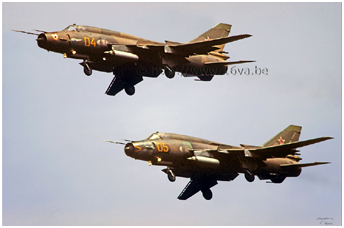
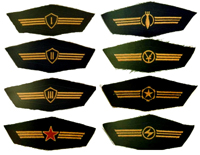 When I visited the technical department of the regiment for the first time, I was struck by the atmosphere of its office - the warm atmosphere of a cozy apartment with flowers on the windowsills and cheerful curtains on the windows. During IAS checks, division, army, or group evaluators gave only excellent marks.
The availability of the various services meant that they did not spend too much time preparing for the withdrawal. In 1993, most of the equipment was ready for loading, even if the regiment was among the last to leave: the planes in April 1994 and the rest in May-June. In all my previous service I have not seen anything like this in a single regiment or squadron. There was something similar in an independent helicopter detachment of the Railway Corps in Chegdomyn, working during the construction of the eastern branch of the BAM (5).
When I visited the technical department of the regiment for the first time, I was struck by the atmosphere of its office - the warm atmosphere of a cozy apartment with flowers on the windowsills and cheerful curtains on the windows. During IAS checks, division, army, or group evaluators gave only excellent marks.
The availability of the various services meant that they did not spend too much time preparing for the withdrawal. In 1993, most of the equipment was ready for loading, even if the regiment was among the last to leave: the planes in April 1994 and the rest in May-June. In all my previous service I have not seen anything like this in a single regiment or squadron. There was something similar in an independent helicopter detachment of the Railway Corps in Chegdomyn, working during the construction of the eastern branch of the BAM (5).
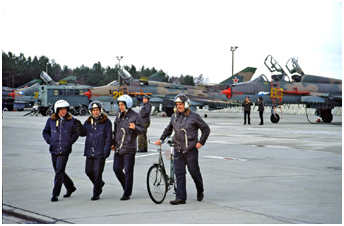
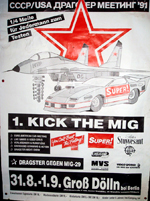 However, Colonel Filimonov had no more than a 100 people under his command, 8 Mi-8 helicopters and 12 different special vehicles, while here it was an entire garrison! It was a shame that not all division and army commanders shared the visions and deeds of Colonel V. V. Tamarovski. No, Valery Vladimirovich did not violate any regulations (if he had tried, he would have been removed from office!). But what he and his subordinates did caused fear and anxiety. Take off in zveno formation (6)? Why, when you can do it solo or at worst in pairs! Flying to the firing range without being spotted by the "enemy's" radars - why take such risks? Flying in tight formations in pairs or in squadrons - unsafe! And there were enough such discrepancies that flight safety was a concern. But the best security is a covered plane on the ground, in a shelter with closed doors! For some, the 16.VA was a combat training academy, for others, the very prospect made them tremble.
However, Colonel Filimonov had no more than a 100 people under his command, 8 Mi-8 helicopters and 12 different special vehicles, while here it was an entire garrison! It was a shame that not all division and army commanders shared the visions and deeds of Colonel V. V. Tamarovski. No, Valery Vladimirovich did not violate any regulations (if he had tried, he would have been removed from office!). But what he and his subordinates did caused fear and anxiety. Take off in zveno formation (6)? Why, when you can do it solo or at worst in pairs! Flying to the firing range without being spotted by the "enemy's" radars - why take such risks? Flying in tight formations in pairs or in squadrons - unsafe! And there were enough such discrepancies that flight safety was a concern. But the best security is a covered plane on the ground, in a shelter with closed doors! For some, the 16.VA was a combat training academy, for others, the very prospect made them tremble.
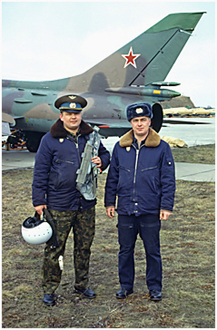
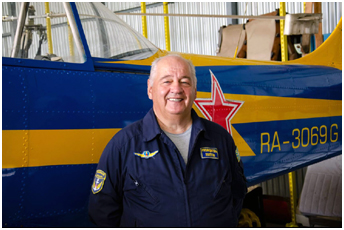 The creative nature of Colonel Tamarovski and his teammates resulted first in the famous photograph taken by his German photographer friend, and then in the film "Everybody Goes to Fight!" These initiatives were welcomed, but not necessarily by everyone. But the years have passed, and the photography as well as the film have remained as a tribute to the glorious Guards of the 20th! Not only those who served in this garrison will not be forgotten, but also the pilots of the 730.APIB. After taking off from their Neuruppin Airfield, they landed to refuel and left the next day to return to Russia. To welcome
the planes upon their arrival, Valeri Vladimirovich had lined up his entire regiment along with the support units in full uniform and the regimental banner! They will never forget it! [In the film "Everybody Goes to Fight" at 44'41"].
And his idea, together with local German leaders, to organize open days in his garrison with a demonstration of the aircraft and racing car competitions on the runway! Sports car competed not only with each other, but also with the Su-17! (7). He would have been a great commander if not for the collapse of the Soviet Union! Although the question is open, because he was very independent!
Colonel Tamarovski did not leave with his regiment, but a year earlier to be transferred to the Vladivostok region, where he completed his military service. But he did not leave the world of aviation, taking the helm of the DOSAAF in the Primorskiy Krai (8). Yes, the Russian land is rich in heroes and talents! Valery Vladimirovich is one of them!
The creative nature of Colonel Tamarovski and his teammates resulted first in the famous photograph taken by his German photographer friend, and then in the film "Everybody Goes to Fight!" These initiatives were welcomed, but not necessarily by everyone. But the years have passed, and the photography as well as the film have remained as a tribute to the glorious Guards of the 20th! Not only those who served in this garrison will not be forgotten, but also the pilots of the 730.APIB. After taking off from their Neuruppin Airfield, they landed to refuel and left the next day to return to Russia. To welcome
the planes upon their arrival, Valeri Vladimirovich had lined up his entire regiment along with the support units in full uniform and the regimental banner! They will never forget it! [In the film "Everybody Goes to Fight" at 44'41"].
And his idea, together with local German leaders, to organize open days in his garrison with a demonstration of the aircraft and racing car competitions on the runway! Sports car competed not only with each other, but also with the Su-17! (7). He would have been a great commander if not for the collapse of the Soviet Union! Although the question is open, because he was very independent!
Colonel Tamarovski did not leave with his regiment, but a year earlier to be transferred to the Vladivostok region, where he completed his military service. But he did not leave the world of aviation, taking the helm of the DOSAAF in the Primorskiy Krai (8). Yes, the Russian land is rich in heroes and talents! Valery Vladimirovich is one of them!
VladimirK49. Edited from the original text (> Link).

|

















